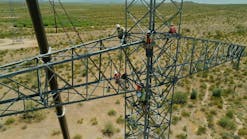DOE Announces Bipartisan Infrastructure Law Opportunities for Rural America
Rural America is a crucial part of the nation’s energy sector and energy infrastructure. Rural communities not only produce key energy inputs, but also can benefit from the economic growth and development that energy infrastructure investments unlock. Leveraging billions of dollars in President Biden’s Bipartisan Infrastructure Law and existing agency efforts, the U.S. Department of Energy (DOE) is committed to making transformative investments in rural energy infrastructure for clean transportation and new mobility strategies, energy generation and use, and enhanced cybersecurity. DOE’s rural programs include work done through the Office of Indian Energy with a focus on tribal lands, which have a significant overlap with rural lands and the Interagency Working Group on Coal and Power Plant Communities and Economic Revitalization, co-chaired by Secretary of Energy Jennifer M. Granholm.
READ the complete White House Rural Playbook.
READ the full DOE Rural Opportunities Fact Sheet. A few highlights include:
Investing in Rural Transportation
- Electric Vehicles – The Bipartisan Infrastructure Law created the Joint Office of Energy and Transportation, which will provide technical assistance to support the efficient and equitable deployment of electric vehicle Charging and other related programs. This office will be a key resource for local communities. For more information visit driveelectric.gov.
- DOT Rural Electric Mobility Infrastructure Toolkit (with technical support from the DOE Office of Energy Efficiency and Renewable Energy, Vehicle Technologies Office) – The Department of Transportation has released an online toolkit that provides a free, one-stop resource to help rural stakeholders scope, plan, and fund EV charging infrastructure. The toolkit includes technical resources from the DOE Vehicle Technologies Office on electric vehicle basics, considerations for developing electric vehicle infrastructure, connecting with local Clean Cities coalitions to facilitate infrastructure deployment, and locating existing electric vehicle infrastructure. The toolkit is currently available at www.transportation.gov/rural/ev/toolkit.
- DOE’s Vehicle Technologies Office, New Mobility Services in Rural America – Through projects awarded as part of the Vehicle Technologies Office’s (VTO) ongoing body of funding opportunities, the VTO Technology Integration Program is working with several rural communities across the country to conduct pilot demonstrations of new mobility technologies, such as electric vehicles for carsharing and first-last mile microtransit. These projects are broadening the transportation choices for rural areas to provide affordable and efficient access to these services with solutions responsive to local needs. Ongoing projects for these rural and underserved communities are providing carsharing services with electric vehicles, electric shuttle bus demonstrations, and low speed microtransit that serves local destinations as well as connecting the community to transit services to a nearby urban center. The Vehicle Technologies Office is located in our Energy Efficiency and Renewable Energy office; funding opportunities and timelines are listed at eere-Exchange.energy.gov.
Supporting Rural Energy, Environments, and Climates
- Rural and Municipal Utility Advanced Cybersecurity Grant and TA Program – Leveraging $250 million in funding from the Bipartisan Infrastructure Law for this provision, DOE, in coordination with the DHS Secretary, FERC, NERC, and the Electricity Subsector Coordinating Council (ESCC) will create a new DOE Rural and Municipal Utility Advanced Cybersecurity Grant and Technical Assistance Program to support eligible entities to protect against, respond to, and recover from cyber threats. The purpose of program is to deploy cyber technologies for electric utility systems, prioritizing critical facilities, and increase participation in cyber threat information sharing programs. DOE is seeking a waiver or reduction of cost share given this is a technical assistance effort.
- Infrastructure planning for micro and small modular nuclear reactors – The Bipartisan Infrastructure Law authorizes assistance for feasibility studies for siting advanced reactors for the purpose of identifying suitable locations for the deployment of micro-reactors, small modular reactors, and advanced nuclear reactors in isolated communities.
- Energy Improvement in Rural and Remote Areas – Administered through the Office of Clean Energy Demonstrations, the Bipartisan Infrastructure Law provides $1B to carry out activities to improve the resilience, safety, reliability, and availability of energy and provide environmental protection from adverse impacts of energy generation in rural and remote communities with populations of 10,000 or less. Eligible projects may include: (A) Overall cost-effectiveness of energy generation, transmission, or distribution systems; (B) siting or upgrading transmission and distribution lines; (C) reducing greenhouse gas emissions from energy generation by rural or remote areas; (D) providing or modernizing electric generation facilities; (E) developing microgrids; and (F) increasing energy efficiency. DOE anticipates emphasizing grid reliability and resiliency for the funding, and will conduct stakeholder engagement over the next few months to inform the structure of the program.
- Funding for Clean Energy Manufacturing and Workforce Development – The Bipartisan Infrastructure Law investments in clean energy technology supply chains for technologies like batteries will allow America to make the energy technologies of the future right here at home, boosting our competitiveness within a global clean energy market expected to reach $23 trillion by the end of the decade. These investments will create good jobs up and down the supply chain—especially manufacturing jobs and skills-matched opportunities for fossil fuel workers. Department of Energy’s funding will go primarily to clean energy manufacturing facilities across the country. These funds include a $750 million program specifically focused on census tracts with closed coal mines and plants, which have a significant overlap with rural and remote communities.
Existing DOE Programs to Support Rural Communities
- Community Scale Resource and Energy Recovery from Organic Wastes Program – DOE’s Office of Energy Efficiency and Renewable Energy, Bioenergy Technologies Office will offer multiple awards totaling up to $5M of non-BIL funds to support the development of community-centered solutions, business plans and experimental demonstrations for resource and energy recovery from organic waste streams, such as food waste, municipal wastewater sludges, animal manure, and fats, oils, and greases. To ensure community involvement that can extend beyond the life of the projects, only community led, or associated organizations are eligible to be prime recipients on the projects selected. The call for proposals will be posted on EERE Exchange at eere-Exchange.energy.gov.
- Wind Innovations for Rural Economic Development (WIRED) – EERE-Wind Energy Technologies Office’s Wind Innovations for Rural Economic Development (WIRED) initiative awarded $6M in FY20 to support rural electric utilities and the communities they serve with 1) assessing the benefits and opportunities for distributed wind (DW) on their grids, 2) reducing technical risks, 3) and identifying and addressing the knowledge and resource needs to facilitate the adoption of DW. WETO plans to build on these efforts in FY22 by making available up to $4M to further de-risk the adoption of DW in rural communities. Successful project teams will identify replicable DW solutions, inform permitting and interconnection processes, and develop ownership and business models that maximize the local economic and power system benefits. Work will include network creation, research, development, and design of pilot (or user demonstration) projects that are broadly applicable and repeatable.
- Office of Indian Energy Policy and Programs – The Office of Indian Energy uses a three-pronged approach to support 574 federally recognized tribes, over 200 Alaska Native Village Corporations, and 13 Alaska Native Regional Corporations, harness their vast and undeveloped resources through: 1) financial assistance; 2), technical assistance; and, 3) education and capacity building. Since 2010, the Office of Indian Energy has invested over $114 million in more than 200 tribal energy projects. Current and ongoing funding opportunities are available on the Office of Indian Energy website.


